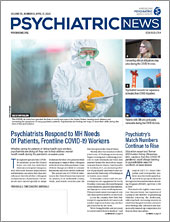The Substance Abuse and Mental Health Services Administration (SAMHSA) has released guidance on the treatment of opioid use disorder (OUD) during the COVID-19 pandemic, specifically with respect to privacy and sharing of medical records related to substance use treatment. It has also clarified, with FAQs, its guidance about the ability of opioid treatment programs (OTPs) to offer medications via telehealth during the pandemic.
Regarding privacy, SAMHSA acknowledged that treatment providers may not be able to obtain written patient consent for disclosure of substance use disorder records during the pandemic. Therefore, “[t]he prohibitions on use and disclosure of patient identifying information under 42 CFR Part 2 would not apply in these situations to the extent that, as determined by the provider(s), a medical emergency exists” and “patient-identifying information may be disclosed by a Part 2 program or other lawful holder to medical personnel, without patient consent, to the extent necessary to meet a bona fide medical emergency in which the patient’s prior informed consent cannot be obtained,” the guidance states.
The guidance also includes a reminder that the regulations require programs to “document certain information in their records after a disclosure is made pursuant to the medical emergency exception.”
In its FAQs, SAMHSA noted that under 42 CFR Section 8.11(h), it has chosen to exempt OTPs from certain requirements. For the duration of the national emergency, OTPs are exempt “from the requirement to perform an in-person physical evaluation (under 42 CFR § 8.12(f)(2)) for any patient who will be treated by the OTP with buprenorphine if a program physician, primary care physician, or an authorized health care professional under the supervision of a program physician, determines that an adequate evaluation of the patient can be accomplished via telehealth.”
However, this exemption does not apply to new OTP patients treated with methadone. These patients must still be evaluated in person. Other key points in the SAMHSA FAQs include the following:
•
OTPs may use telehealth, including care provided over the telephone, to continue treatment of existing OTP patients who use methadone or buprenorphine.
•
Health care professionals who are qualified with a waiver under the Drug Addiction Treatment Act of 2000 (“DATA waiver,” “X waiver”) and who are working outside the context of an OTP may treat new and existing patients with buprenorphine via telehealth.
•
OTPs may dispense either methadone or buprenorphine medications based on a telehealth evaluation. They may provide medication under a blanket exception: up to 14 doses for clinically less stable patients and 28 doses for clinically stable patients.
•
Mid-level practitioners in OTPs can administer and dispense medications for treating OUD without the direct supervision of an OTP physician, if the mid-level practitioner is “licensed under the appropriate state law and registered under the appropriate state and federal laws to administer or dispense opioid drugs.” However, the OTP medical director still must assume responsibility for administering all medical services provided by the OTP.
The guidance is the right move in terms of public health, particularly as many patients with OUD face challenges with transportation, said Andrew J. Saxon, M.D., a professor in the Department of Psychiatry and Behavioral Sciences at the University of Washington and director of the Center of Excellence in Substance Abuse Treatment and Education at the VA Puget Sound Health Care System. Saxon is a member of APA’s Council on Addiction Psychiatry.
“A lot of patients with OUD take public transportation to get to appointments and could be putting themselves or others at risk, so we want to minimize that,” Saxon said.
He added that the nation is venturing into uncharted territory with respect to telemedicine and treatment for substance use disorders like OUD, but he is optimistic.
“No one has really studied this for substance use, but with general mental health, there have been studies showing pretty equal outcomes [compared with in-person visits]. My experience is that there is very little difference with seeing patients on the screen versus in person,” Saxon said, noting that psychiatrists generally do not perform full physical examinations.
Saxon noted that although certain aspects of OUD treatment may be a challenge, such as urine screening, telehealth may afford several opportunities for new insights into a patient’s well-being and shed light on the usefulness of new solutions.
“With telehealth, you might see the patient’s interaction with pets if they have any or the orderliness of their abode,” Saxon said. “A lot of substance use treatment is provided in group therapy, and that may be more challenging, but it can be done on a conference call, which is less ideal, or with videoconferencing, where you can see other people on a call.” ■
“COVID-19 Public Health Emergency Response and 42 CFR Part 2 Guidance” is posted
here.
“FAQs: Provision of Methadone and Buprenorphine for the Treatment of Opioid Use Disorder in the COVID-19 Emergency” is posted
here.


